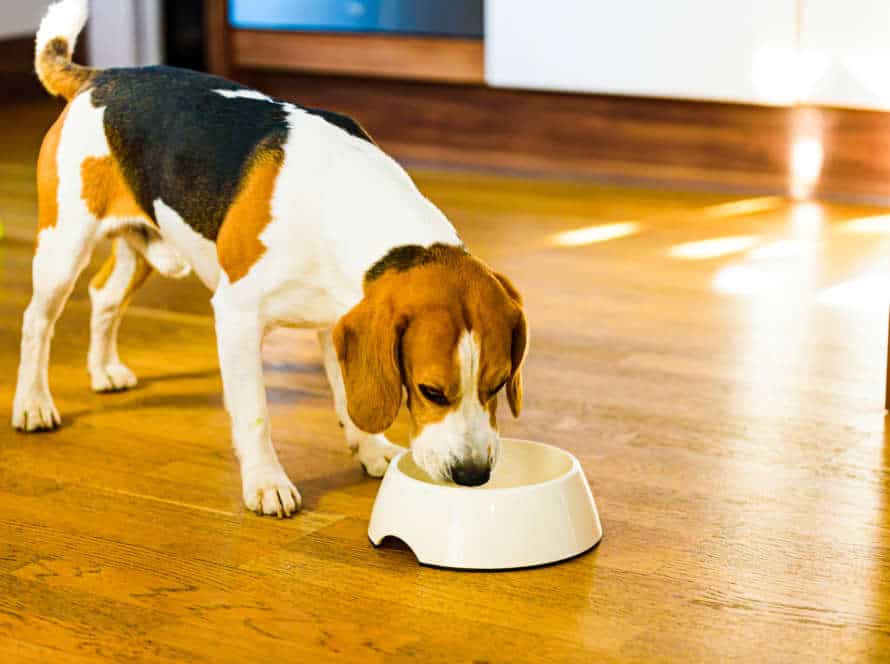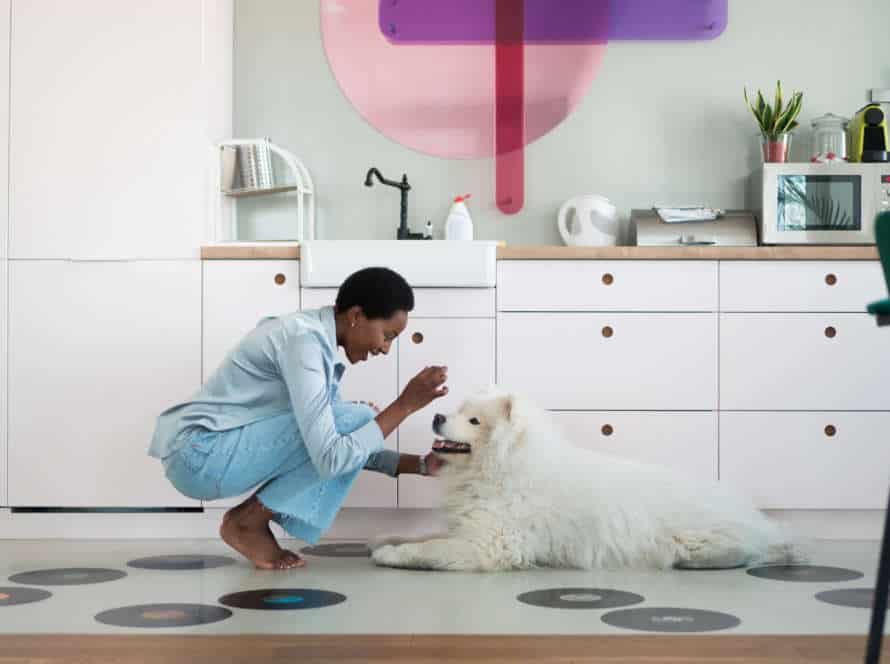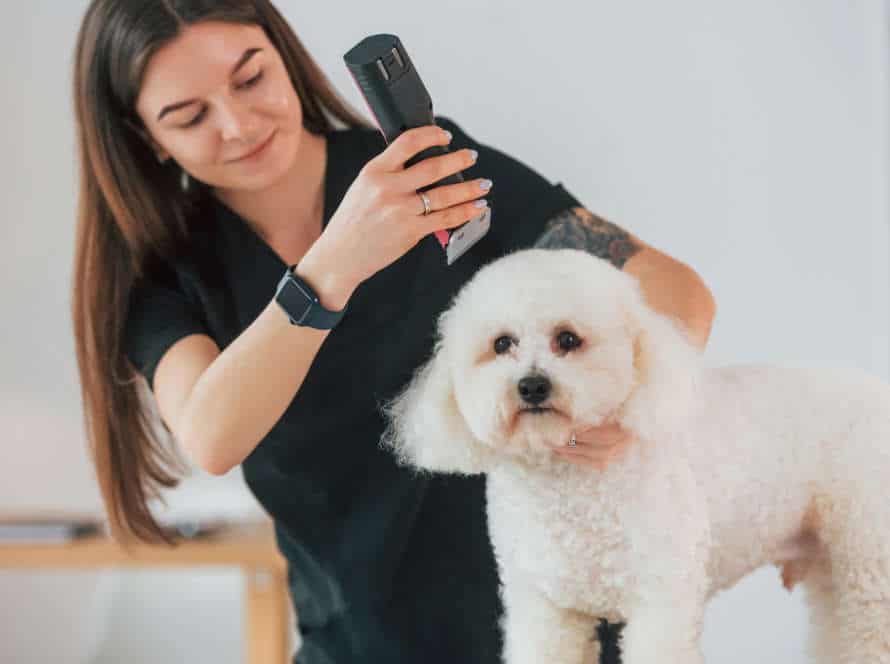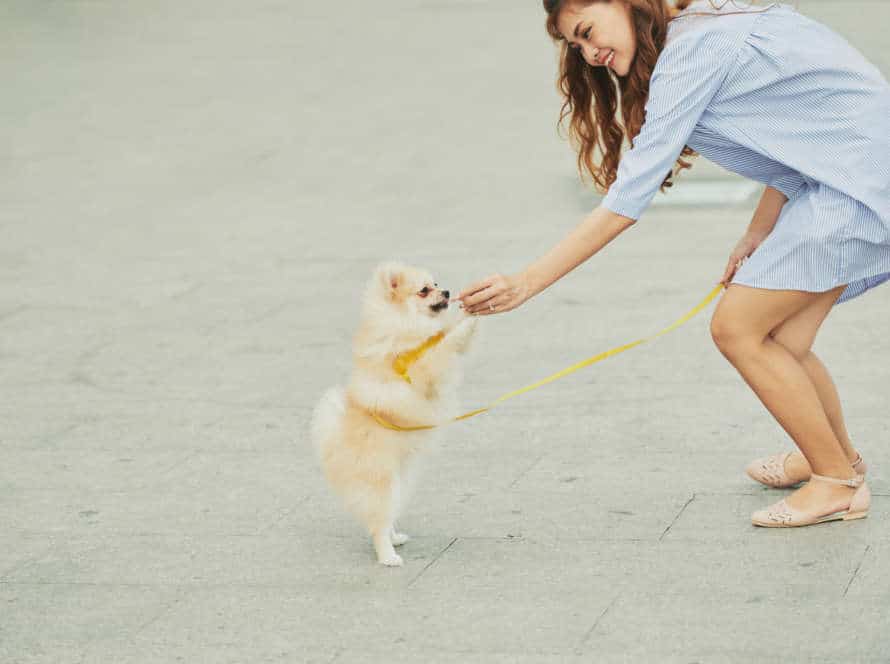Why Exercise is Important for Indoor Dogs
Exercise is key for pup health and cheer! Not only does it keep ’em active, it also helps their mental state.
Pups stuck inside all day can’t get the physical activity they should; So, to stay fit and content, indoor exercise is good.
This guide has all the info you need, to make sure your pup gets the daily exercise they need.
Benefits of Regular Exercise for Dogs
Exercising regularly is essential to keep your canine pals healthy and well. Let’s take a look at the significant benefits of regular exercising for your indoor doggos:
- Weight management: Exercise helps keep your pup’s weight in check, preventing obesity and its related issues like diabetes, heart disease, and arthritis.
- Mental stimulation: Exercise gives a sense of accomplishment and cuts down boredom and anxiety. It also stimulates the brain, helping with memory and cognitive function.
- Better behavior: Exercise channels your pup’s energy and instincts in a positive way, reducing unwanted behaviors like chewing, digging, and excessive barking.
- Stronger muscles and bones: Exercise helps build muscle mass and strengthen bones, allowing them to stay agile and mobile even as they age.
Indoor exercising solutions: There are various indoor exercise options like fetch, tug-of-war, and interactive toys.
Regular exercise is a must for your pup’s physical and mental health. Make sure to provide enough exercise opportunities for your indoor doggos so they can live happily and healthily.
Consequences of Inadequate Exercise for Indoor Dogs
Serious repercussions can come from insufficient exercise for indoor dogs – both mentally and physically. Energy not expended can result in restlessness, anxiety, and misbehaviors like destruction and excessive barking. Plus, physical health risks can include obesity, diabetes, and cardiovascular disease.
Though indoor dogs don’t have the same space as outdoor dogs, there are still solutions to get adequate exercise. These include hide-and-seek, tug-of-war, fetch, and training sessions. Plus, daily walks, trips to the dog park, and indoor agility courses are great options to keep your pup fit and content.
Giving your indoor dog regular exercise not only helps them stay healthy and happy, but also strengthens the bond between you and your pup.
Understanding Your Dog’s Exercise Requirements Based on Breed and Age
It’s critical to know your pup’s exercise needs based on their breed and age. This is to keep them healthy and content. Exercise is essential for indoor dogs. It stimulates them mentally and physically, benefiting their wellbeing.
Here’s what you should know:
- Breed: Various breeds have diverse exercise requirements. E.g., active breeds like Border Collies need more exercise than low-energy breeds like Bulldogs.
- Age: Pups require daily exercise to build their muscles and coordination. Senior dogs benefit from gentle exercise to remain mobile.
Indoor dog exercise solutions include interactive toys, fetch and training exercises. It’s important to have a routine that fits your pup’s needs to guarantee their health and happiness. Pro tip: A fit pooch is a happy one!
Indoor Exercise Solutions for Dogs
It’s essential to keep your pup active and healthy! But, sometimes the weather or other things stop us from going outside with them. No worries, though! There are loads of ways to get your pup exercising indoors. This guide will show you some of the best indoor exercise options for your furry pal. Keep your pup fit, happy, and healthy!
Treadmill Training for Dogs
Treadmill training can be a great solution for your pup’s indoor exercise needs when the weather is bad, or when you don’t have enough time or space for outdoor walks or runs. Here are few tips to keep in mind:
- Start slow and let your pup get used to the noise and motion of the treadmill.
- Always supervise them and adjust the speed and incline according to their fitness level.
- Use treats and praises to motivate them to stay on the treadmill.
- Keep the session short, usually 10-15 minutes, and increase the duration as they become more comfortable.
- Use a leash and harness to stop them from jumping or falling off.
- Lastly, consult with your vet to make sure this method is suitable for your pup’s breed, age, and health condition.
Using Stairs for Exercise
Climbing stairs can be a great way to give your indoor pup exercise. It helps with their heart and strengthening their legs and joints. Here are some tips:
- Start off small, just a few sets and add more as your pup gets used to it.
- Be close to them so they don’t have any falls or get hurt.
- If your pup has joint problems, talk to the vet first.
- Treats or toys are a great way to motivate them.
- Always give them water after exercise so they don’t get dehydrated.
Fetching Games and Activities
Dogs need regular exercise for their wellbeing and joy, even if they can’t go outside due to bad weather or other reasons. Fetching games and activities are an amazing way to keep your pup active and excited indoors.
Here are some indoor fetching activities for your furry friend:
- Soft plush toy fetching,
- Tennis ball or any other rubber ball fetching,
- Using interactive toys like treat-dispensing balls, tug toys, or puzzle toys,
- Using a laser pointer to engage and amuse your pup.
Remember to give your pooch enough space to move around safely and keep delicate things away from their play area.
Strength and Agility Building
Strengthening and improving your dog’s agility is possible! To do this indoors, there are different activities to choose from. This guide will help you get started on building strength and agility for your pup. Have fun and watch them become stronger and more agile!
Using Lightweight Equipment for Strength Training
Lightweight equipment is a great way to help your dog stay strong. Depending on their size and breed, you may need different gear. Examples are resistance bands, agility cones, and free weights.
Resistance bands target muscles. Agility cones work on coordination and speed. Free weights add a challenge.
Remember to start slow and build up. Know the right way to use the equipment, so no one gets hurt.
Pro tip: Make strength training enjoyable. Set goals and reward your pup.
Increase Agility with Simple Indoor Obstacle Courses
Make your dog’s indoor playtime more fun and active with a simple obstacle course! With some household items and creativity, you can create a course to help improve their agility, strength, and fitness. Here are some tips to help you get started:
- Use chairs, pillows, hula hoops, cones, and blankets to create the obstacles.
- Design the course keeping your dog’s size, age, and breed in mind.
- Incorporate basic commands like sit, stay, and come.
- Always supervise your dog and use positive reinforcement.
Pro Tip: Indoor obstacle courses are not just excellent for physical exercise, but also great for mental stimulation and bonding with your pup.
Introducing Interactive Toys for Fitness and Mental Stimulation
Interactive toys are great for keeping your pup physically and mentally stimulated. Not only do these toys provide physical benefits like building strength and agility, but they can also reduce anxiety and improve cognitive function.
You can find various types of interactive toys to choose from. For strength and agility, try frisbees, flying discs, or tugger ropes. For indoor exercise, get puzzle feeders, which require your pooch to solve a task to get treats or toys. These challenges help their cognitive function, plus they’re mentally stimulating.
Pro tip: To keep things interesting, switch the interactive toys every few days.
Creating a Fun Home Exercise Routine for Dogs
Indoor exercising can be a great way for your pup to stay healthy and happy when the weather isn’t great. Or if you can’t go out for long walks. This guide will discuss the pros and cons of indoor exercise for dogs. Plus, provide creative ideas for your pup’s daily dose of physical activity. Have fun and get moving!
Setting Goals and Measuring Progress
Reaching goals and measuring progress is key when making a fun home exercise routine for dogs. It helps you keep track of your pup’s progress and keep them motivated. Here are some tips:
- Start with reasonable goals – Set short-term objectives that are achievable and realistic for your dog’s fitness level and age. As your dog improves, set new goals that are tougher and more rewarding.
- Track their exercise routine – Note the type of exercise, duration, and frequency. You can use a journal or an activity tracker to monitor your dog’s progress.
- Watch their behavior – Observe your dog’s behavior during and after exercise. A content and tired pup indicates the session was successful and enjoyable.
Measuring progress and achieving goals with your dog can be a fun and exciting way to bond and promote fitness.
Making Exercise a Daily Routine
Exercise is key for humans and pups for physical and mental health. Here’s how to make an exercise routine fun and enjoyable for your pup:
- Begin with a warm up. Go on a brisk walk, stretch, or play fetch.
- Include indoor activities. Set up an obstacle course or do a scavenger hunt.
- Bond with your pup. Use the time to say motivational phrases, or teach them new tricks.
- Vary the routine. Avoid boredom by changing activities, location, and duration.
- Cool down. Take a slow walk or pet them to cool their muscles.
By following these tips, you can ensure your pup stays healthy and happy. Pro Tip: Talk to your vet to make sure the routine is right for their age, breed, and medical history.
Combining Indoor and Outdoor Exercise for Maximum Opportunities
Mixing indoor and outdoor exercise for your pup is a great way to offer them plenty of physical activity, keep their mind occupied, and break up boring exercise routines. Here are some tips:
Indoor Exercise:
- Throw balls, ropes, or cuddly toys for them to play fetch.
- Set up a course with chairs, boxes, and pillows.
- Teach new tricks, like shaking hands, jumping hoops, or crawling under tables.
Outdoor Exercise:
- Go on a walk or jog in the park.
- Visit a dog park and play with other pups.
- Do hikes and treks together.
Mixed Exercise:
- Do indoor activities, like tug-of-war or fetch, when it’s raining.
- Use outdoor space to extend walks and explore new areas.
By combining these two methods, your pup will get enough exercise while also having fun and avoiding boredom.
Benefits of Professional Help for Creating a Comprehensive Exercise Routine
Designing an indoor exercise plan for your pup can be difficult. Get professional help! A dog trainer can design a routine specifically for your pup’s needs. This guide looks at the benefits of working with a professional while making an indoor exercise plan.
Working with Trainers for Specific Exercise Needs
A professional trainer can provide many advantages when you are looking for an exercise routine that meets your fitness goals.
They can:
- Assess your fitness level and create a personalized plan.
- Guide you on the right technique and form.
- Motivate you, set achievable goals and help you reach them.
- Personalize your routine to target your needs.
- For pet owners, they can create an indoor exercise solution.
Pro tip: Talk to a professional trainer before starting a new exercise routine or making big changes.
Understanding Restrictions Based on Health Conditions of Your Dog
Before starting an exercise routine for your pup, it’s important to understand the restrictions based on their health. Problems like joint issues, heart diseases, respiratory disorders, or obesity can limit their ability to workout.
Seeking help from a professional can be useful in creating a tailored routine. A vet or certified dog trainer can design an exercise plan based on your dog’s needs and health. Plus, they can guide you on the right type of exercise, intensity level, and how long to do it.
In case of health restrictions, indoor activities can be a great alternative for keeping your dog fit. Things like hide-and-seek, tug-of-war, indoor fetch, or using a treadmill can help with physical and mental well-being while staying safe.
Knowing your dog’s health will help you make the right decisions for their exercise program, keeping them healthy and happy for a long time.
Finding Local Exercise Programs and Buddy Systems for Indoor Dogs
For indoor dogs that need new ways to stay active, local exercise programs and buddy systems can be beneficial. Professional help can create a tailored exercise routine for your pup. Benefits of working with a pro:
- Tailored Exercise Plan: A trainer will make a plan fit for your dog’s needs.
- Consistent: A designated system ensures your pup gets enough physical activity daily.
- Variety: Trainers can keep your dog engaged with various activities and exercises.
Get professional help to keep your indoor dog healthy, happy, and active! Pro tip: Talk to your vet before starting a new routine, especially if your pup has any health issues.
Frequently Asked Questions
1. What are some indoor exercise solutions for dogs?
Some indoor exercise solutions for dogs include playing fetch in a hallway, teaching your dog new tricks, and using aerobic exercise DVDs designed for dogs.
2. Do I need to invest in expensive exercise equipment to keep my dog active indoors?
No, there are plenty of inexpensive and creative ways to exercise dogs indoors. You can create obstacle courses using household items or go on a treasure hunt with your dog.
3. Can any dog breed exercise indoors?
Yes, any dog breed can exercise indoors, but exercise needs vary by breed and age. Consult your veterinarian to determine the best indoor exercise plan for your dog.
4. What are some benefits of indoor exercise for dogs?
Indoor exercise can benefit dogs by improving their overall health, preventing behavioral problems, and keeping them energized and mentally stimulated.
5. How much indoor exercise does my dog need?
The amount of indoor exercise a dog needs depends on their age, breed, and overall health. As a general rule, dogs need at least 30 minutes to an hour of exercise per day.
6. What are some safety tips for exercising dogs indoors?
Some safety tips for exercising dogs indoors include making sure your workout area is free of sharp or hazardous objects, keeping your dog hydrated, and supervising playtime to prevent injury.







